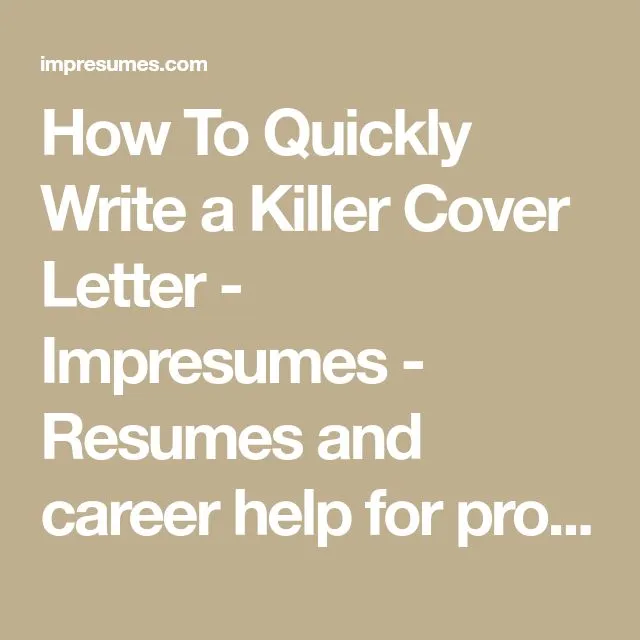What is a Cover Letter?
A cover letter is a crucial document accompanying your resume when applying for a job. It serves as an introduction, providing context to your application and highlighting your qualifications and enthusiasm for the position. It’s your chance to make a strong first impression and persuade the hiring manager that you are the ideal candidate. Unlike your resume, which lists your experience and skills, your cover letter allows you to tell a story, connecting your background to the specific job requirements and expressing your unique value proposition. Think of it as a personalized sales pitch, designed to convince the employer to invite you for an interview. A well-crafted cover letter can significantly increase your chances of landing an interview.
Why Do You Need a Cover Letter?
While a resume provides a snapshot of your qualifications, a cover letter provides the narrative. It bridges the gap between your skills and the job requirements, demonstrating how your experience aligns with the company’s needs and values. Cover letters allow you to showcase your personality, enthusiasm, and writing skills, setting you apart from other applicants. Many employers consider cover letters essential, using them to assess your communication skills, attention to detail, and genuine interest in the role. Without a cover letter, you risk appearing impersonal and may miss the opportunity to make a compelling case for why you are the right fit. In today’s competitive job market, a strong cover letter is often the key to getting your foot in the door.
Cover Letter Key Elements
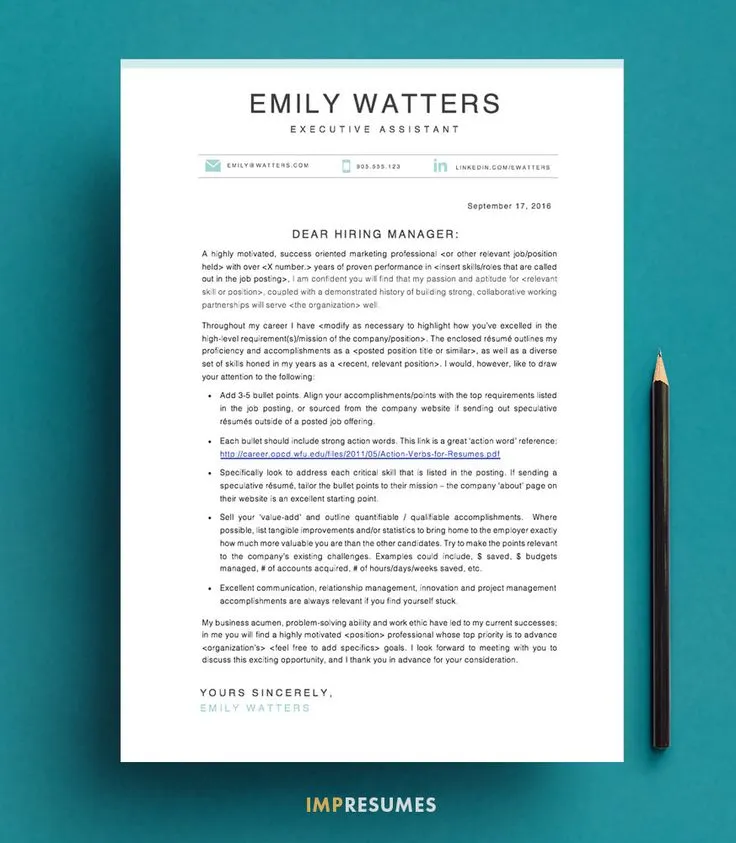
A well-structured cover letter is essential for making a positive impression. It should follow a standard format, including specific elements that demonstrate professionalism and effectively communicate your qualifications. Each component plays a crucial role in conveying your message and ensuring the reader understands your suitability for the position. The following sections are standard in a professional cover letter that can help you win interviews.
Header Information
The header should include your contact information, the date, and the recipient’s information. This section ensures that the hiring manager can easily reach you and provides a professional appearance to your letter. Accuracy in this section is vital; any errors may lead to communication problems or make your application appear careless. A clear and well-formatted header sets the tone for the entire letter, signaling professionalism and attention to detail. This section is crucial for the overall presentation of your cover letter and should always be present in your draft.
Your Contact Information
Include your full name, phone number, email address, and optionally, your LinkedIn profile URL. This allows the employer to quickly find your contact details. Ensure your email address is professional; avoid using nicknames or unprofessional handles. Always double-check the accuracy of your contact details to avoid any delays in communication from the hiring manager. Your contact information should be clearly visible and easy to find.
Date
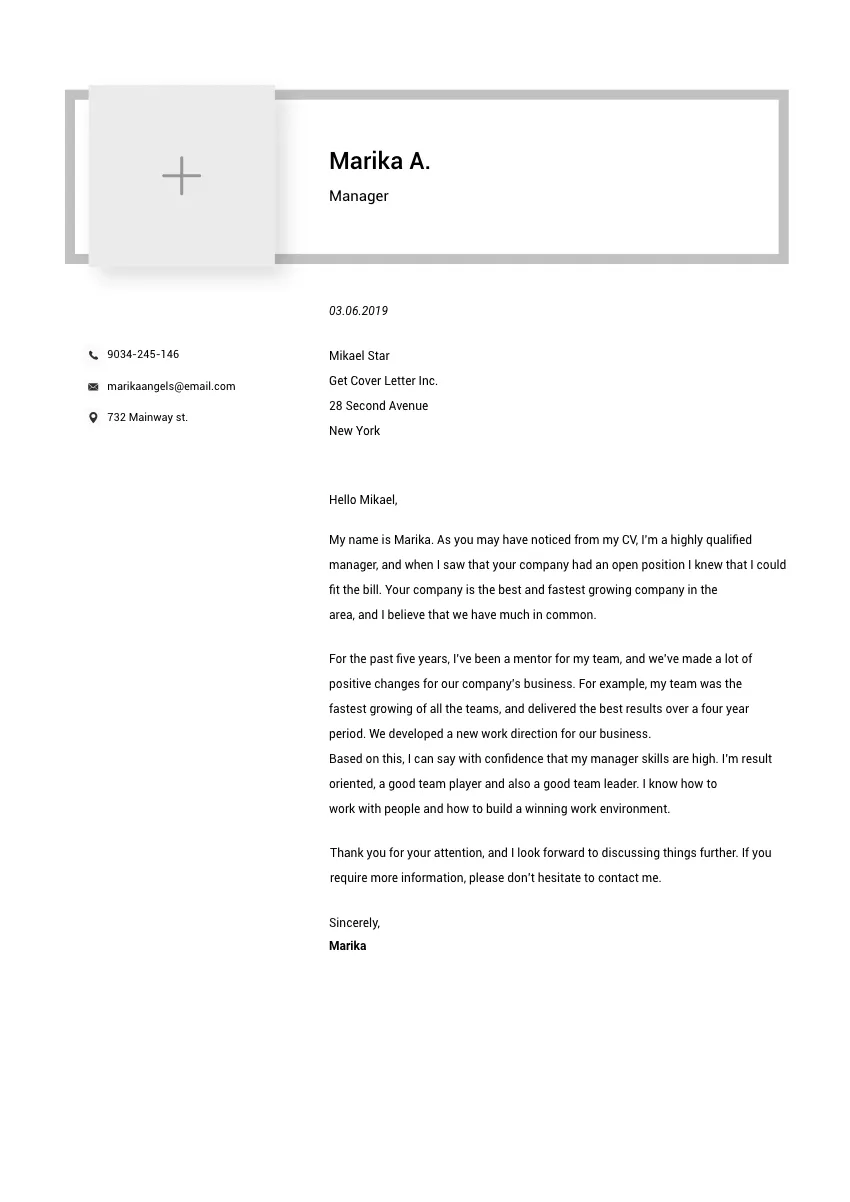
Place the date of writing the cover letter directly below your contact information. This is a standard practice and shows when the letter was written. Use a consistent format (e.g., Month Day, Year) to maintain professionalism. The date helps the employer understand the recency of your application and is a common practice for job applications.
Recipient’s Information
Include the hiring manager’s name (if known), their title, the company name, and the company’s address. Research the hiring manager’s name to personalize your letter. Addressing the letter to a specific person demonstrates effort and attention to detail, whereas using ‘To Whom It May Concern’ may be less effective. If the hiring manager’s name is not available, the HR department is a safe bet.
Salutation
Start with a professional greeting. Use “Dear [Hiring Manager’s Name],” if you know the name. If not, use a formal greeting like “Dear [Company Name] Hiring Team,” or “Dear Hiring Manager”. Avoid casual greetings; your salutation sets the tone for the entire letter, so keep it professional. The salutation is your introduction to the recipient, so it should be respectful and show that you know who you’re addressing. Always use a professional greeting.
Cover Letter Body
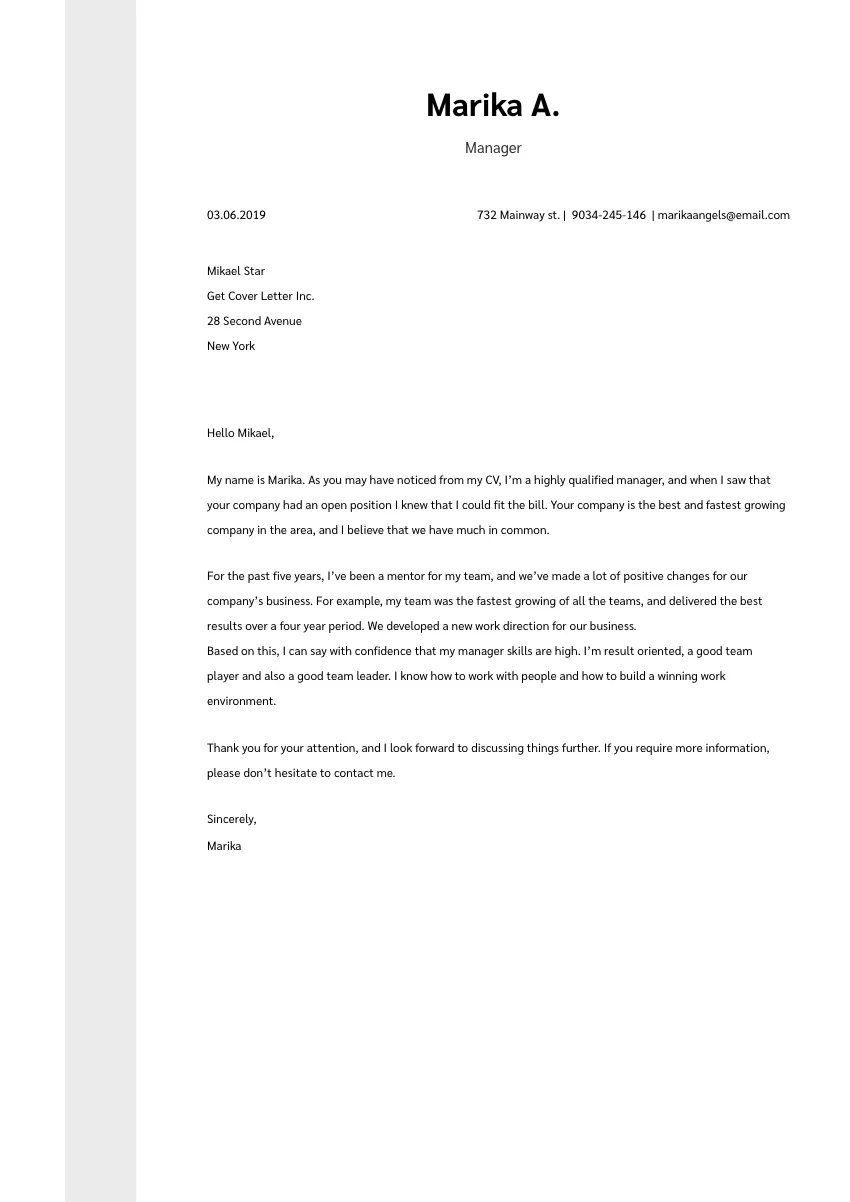
The body of your cover letter is the main content where you showcase your skills, experience, and enthusiasm. This section is where you make a compelling case for why you are the ideal candidate. It should be well-organized, concise, and tailored to the specific job and company. The body comprises the introduction, key skills and experience highlights, and call to action, ensuring you effectively communicate your value proposition.
Introduction Hook
Start with a strong opening statement to grab the reader’s attention. Briefly state the position you’re applying for and where you saw the job posting. Then, include a sentence that highlights your most relevant skill or achievement. Make sure your first impression is positive. Your introduction sets the tone for your entire letter; make it captivating. This section should get the reader interested in learning more about you.
Highlight Your Skills and Experience
Provide 2-3 paragraphs detailing your skills and experience that are relevant to the job description. Use specific examples to show how you’ve used these skills in the past. Quantify your achievements whenever possible (e.g., ‘Increased sales by 15%’). Focus on how your skills align with the employer’s needs and the job requirements, using keywords from the job posting. These paragraphs should be a deep dive into the relevant skills you have to offer.
Showcase Your Achievements

Use bullet points or concise sentences to showcase your notable accomplishments. Focus on quantifiable results and the impact you made in previous roles. This demonstrates your value and provides concrete evidence of your capabilities. Achievements add credibility to your claims and give the hiring manager tangible examples of your successes. Make sure you quantify your impact using data and metrics.
Tailor Your Cover Letter
Customize your cover letter for each job application by referencing the specific job description and the company’s values. Highlight the skills and experiences that directly match the requirements. Show that you understand the company’s mission and culture. This is a crucial step in the application process. Generic cover letters are usually dismissed, so making a personalized impression is vital. Make sure you do your research on the company and adjust accordingly.
Call to Action
Conclude your cover letter by expressing your interest in an interview. Reiterate your enthusiasm for the position and company. This action prompts the reader to take the next step. Make it clear that you would like the opportunity to discuss your qualifications further. Ending with a call to action shows initiative and a clear intent to move forward.
Closing
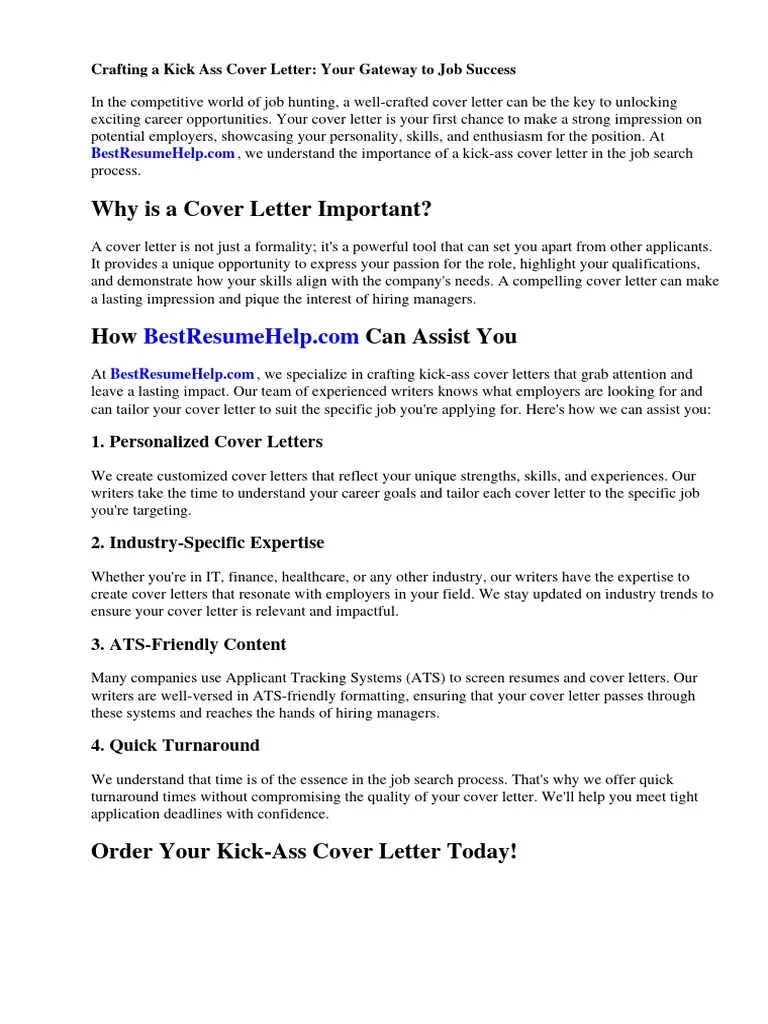
Thank the hiring manager for their time and consideration. Show your appreciation for the opportunity. This is a professional courtesy that leaves a positive impression and concludes the content of your cover letter.
Sign-off
Use a professional closing, such as “Sincerely,” “Best regards,” or “Thank you.” Ensure the sign-off aligns with the tone of your letter. This is the last thing a hiring manager sees, so select a sign-off that conveys professionalism and respect. Your sign-off should be brief, straightforward, and professional.
Cover Letter Formatting
Proper formatting is critical for making your cover letter readable and visually appealing. A well-formatted letter shows attention to detail and professionalism, and it helps the hiring manager quickly scan the content. Formatting errors can detract from your message and may result in your application being overlooked. Adhering to standard formatting practices is essential.
Font Choice
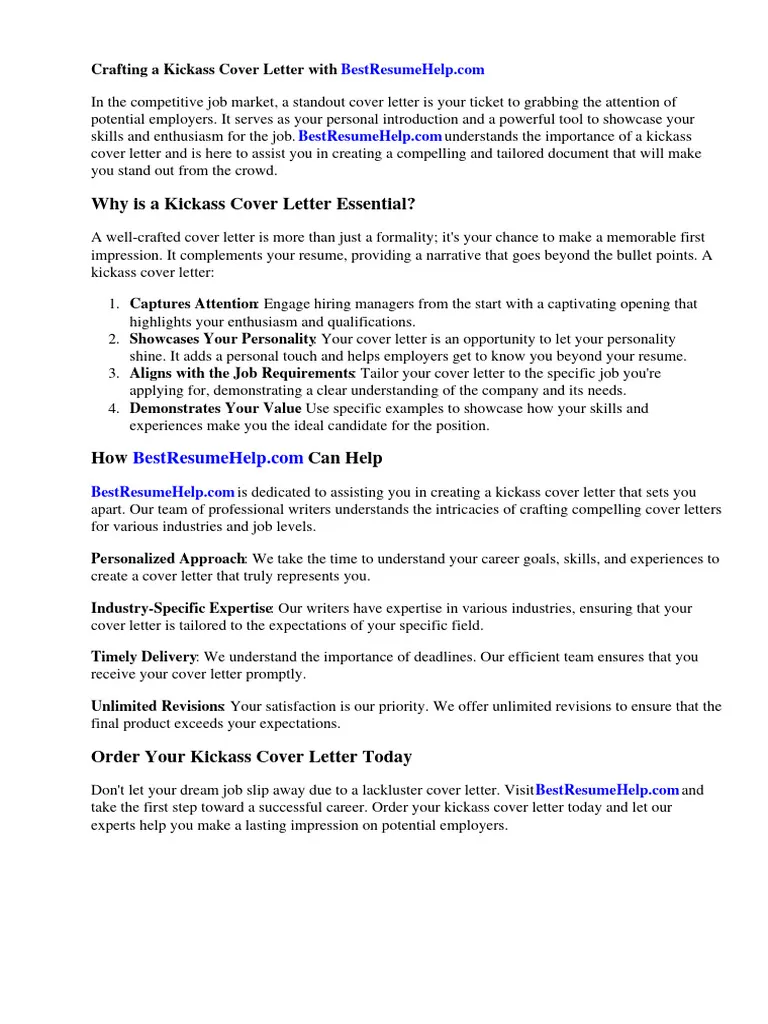
Choose a professional and easy-to-read font such as Times New Roman, Arial, Calibri, or Helvetica. Use a font size between 10 and 12 points. Maintain consistency throughout the letter. Ensure the font is clear and legible, reflecting professionalism.
Margins and Spacing
Use 1-inch margins on all sides of the document. Use single-spacing within paragraphs and double-spacing between paragraphs. This creates a clean and balanced layout. Proper spacing helps to prevent the letter from appearing cluttered, making it easy for the reader to scan. Ensure there is adequate white space to enhance readability.
File Format
Save your cover letter as a PDF (Portable Document Format) to preserve the formatting. This ensures that your cover letter looks the same on any device. Ensure the file is clearly named (e.g., ‘Your Name_Cover Letter’). Sending a PDF ensures your formatting and layout will not be altered when opened by the recipient.
Cover Letter Mistakes to Avoid
Many common mistakes can diminish the effectiveness of your cover letter and prevent you from landing an interview. Being aware of these pitfalls and taking steps to avoid them can significantly increase your chances of success. Avoiding these errors ensures that you present yourself in the best possible light.
Typos and Grammatical Errors
Proofread your cover letter multiple times. Typos and grammatical errors reflect poorly on your attention to detail. Use a spell checker, but also read the letter carefully to catch errors the spell checker might miss. Ask a friend or family member to review it for you. A final proofread is critical; small errors can undermine your credibility.
Generic Content
Avoid using generic phrases or templates that don’t address the specific job or company. Your cover letter should be tailored to each position, highlighting relevant skills and experiences. Generic content shows a lack of effort and will be ignored. Always tailor your cover letter to the role and company.
Ignoring the Job Description
Carefully review the job description and address each requirement. Use keywords and phrases from the job posting to demonstrate your understanding of the role. Show how your skills and experience align with the company’s needs. Make sure to directly address the job’s requirements to show you are a good fit.
Lengthy Cover Letters
Keep your cover letter concise and focused, ideally one page long. Hiring managers often have to review numerous applications, so brevity is key. Focus on your most relevant qualifications and accomplishments. An overlong letter is less likely to be read in its entirety. Keep it concise; a clear, brief cover letter is more effective.
Tone and Voice
Your tone and voice should be professional, enthusiastic, and confident. Write in a clear, concise manner, using strong action verbs to describe your accomplishments. Ensure your writing style is appropriate for the company and industry. A professional tone demonstrates respect, and your voice should convey genuine enthusiasm. Writing in a clear, confident tone increases your impact on the reader.
Using Strong Action Verbs
Start your sentences with strong action verbs that describe your accomplishments. Instead of writing “Responsible for sales,” write “Increased sales by 20% through…” Strong action verbs make your accomplishments more impactful and engaging. Action verbs add impact and demonstrate the concrete results of your efforts. They also help the hiring manager quickly understand your contributions.
Staying Positive and Enthusiastic
Maintain a positive and enthusiastic tone throughout your cover letter. Show your genuine interest in the position and the company. Your enthusiasm can set you apart from other applicants. Your positive attitude is contagious and makes your application more appealing. Positive and enthusiastic language conveys a proactive and eager attitude.
Cover Letter Examples
Reviewing different cover letter examples can provide inspiration and guidance. Looking at various samples helps you understand the different ways to structure and tailor your letter. Examples illustrate how to effectively communicate your qualifications and make a strong impression.
Example for a Specific Job
Find examples that directly align with the job you’re applying for. These examples will show you how to address specific job requirements and highlight relevant skills. Focus on examples tailored to the industry or the position, helping you adapt a model. Look at examples of real letters tailored to the kinds of jobs you are seeking.
Example for a Career Change
If you are changing careers, find cover letter examples that address the transition. These examples emphasize transferable skills and explain your interest in the new field. These examples show you how to bridge gaps in your experience and highlight your new trajectory. Address your reasons for switching careers, which makes your narrative more effective.
Example for a Recent Graduate
For recent graduates, use cover letter examples that highlight academic achievements, internships, and relevant coursework. These examples will guide you in showcasing limited professional experience. Highlight your strengths and educational achievements. Recent graduates often benefit from showing their eagerness to learn and contribute. Remember to tailor the letter to the specific job and the company’s values.
Cover Letter Review and Proofreading
Before submitting your cover letter, review and proofread it meticulously. This is one of the most important steps, as errors can undermine your credibility. Reviewing your letter ensures accuracy and increases your chances of a positive outcome. You should double-check every detail before you send your letter.
